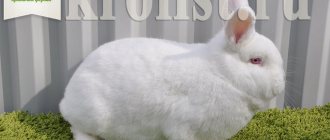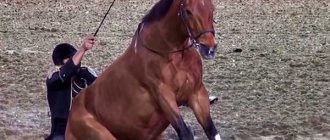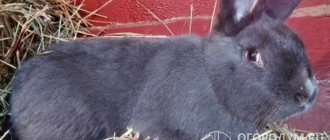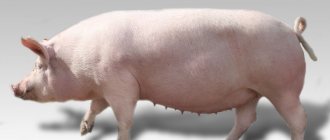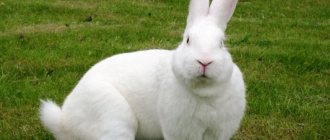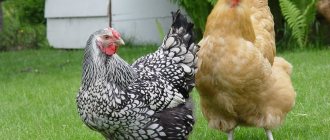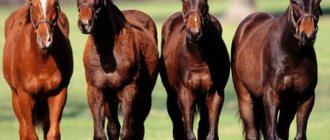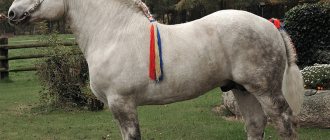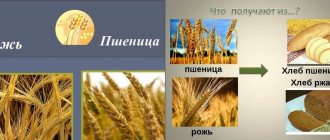The Budyonnovskaya breed of horses is the result of selection work carried out under the personal supervision of a historically significant personality, a man with a flexible mind and a great love for horses - Marshal of the Soviet Union Semyon Mikhailovich Budyonny. He unmistakably determined the presence of breed in horses, and accurately foresaw what would come out as a result of crossing.
The Budyonnovsky breed of horses is one of the best achievements of the employees of the institute, named after the Soviet military leader. Work on breeding the breed was carried out at stud farms named after. CM. Budyonny and them. The First Cavalry Army with the direct participation of Mikhail Ivanovich Chumakov, an experienced horse breeder and manager of the plant named after. CM. Budyonny. Officially, the Budennovskaya breed was registered in 1948.
The history of the origin of the Budennovsk horse
The issue of creating the fastest horses arose in Russia during the wars of the first quarter of the twentieth century.
Heavy equipment was just entering hostilities, and cavalry, in the old fashioned way, decided the outcome of the battle. Therefore, in parallel with the development of industry, the need arose to breed a strong breed of four-legged fighters. In the fall of 1920, Don breeders received an order from the Department of Horse Breeding and Horse Breeding to breed a hardy breed of cavalry horses for the needs of the army.
At that time, they consulted not only with breeders, but also with the military - they first of all knew what characteristics horses should have during combat service.
When breeding cavalry horses, it was extremely difficult to find material, because many breeding stallions were lost in the war, so horse breeders from different parts of the country received horses with a special brand and documents confirming the pedigree.
To breed a horse of the Budennovsky breed, the genetic material was “shared” by Simpatyaga, Kokas and Inferno. The results were finally presented in 1948. Then, by order of the USSR Council of Ministers, a new breed was recognized - the Budennovsky.
Two stud farms in the Rostov region were breeding Budyonnovsky horses - named after. The First Cavalry Army and them. CM. Budyonny. The Yulovsky stud farm has already been disbanded, but the Budennovka is bred at the stud farm named after. S. Kirov, “Steppe”.
At the initial stage, the plant of the First Cavalry Army was inferior in terms of performance to the stud farm of S.M. Budyonny. After all, the famous purebred Rubilnik appeared at the Budyonny factory. It was difficult to work with him, since the offspring had significant defects.
At the same time, at the factory of the First Cavalry Army, selection was carried out not among stallions, but among fillies, making it possible to create a powerful brood stock for the development of offspring.
As the results showed later, this approach made it possible to obtain horses that showed the highest results in horse racing. Today, the First Cavalry Army plant is a leader in its industry.
“Budennovets” is the pride of domestic horse breeding. Horses have exceptional intelligence. In addition, their friendly disposition allows them to successfully use horses in the tourism sector. Budyonnovsk horses are taken for hunting. They are successfully used in hippotherapy.
The breed has many advantages:
- courage;
- patience;
- ease of care;
- inexpensive maintenance;
- stress resistance;
- agreeableness;
- equilibrium;
- kindness;
- high agility;
- ability to develop high speed;
- flexibility in training;
- beautiful appearance.
Budennovskaya horse breed
“Budennovtsy” are excellent sports horses that constantly become prize-winners in equestrian competitions. Horses are used in all sports disciplines. They are great at show jumping. In competitions with obstacles (steppe chase), horses achieve excellent results, even surpassing purebreds. This is probably why Budennovsky horses are incredibly popular among horse breeders.
Important! Sometimes animals have the following disadvantages: nervousness and waywardness
Interesting Facts
- Due to their stamina and endurance, Budennovsky horses are recognized as worthy steeplechase horses. Therefore, they often participate in steeplechase rallies, for example at a rally in Pardubice, where a Budennovsky horse named Priboi won a successful victory.
- The appearance of the Budennovskaya horse breed was due to the lack of repair horses for domestic cavalry officers. Therefore, the modern Budennovskaya horse is playful, persistent and unpretentious.
- In order for a horse to feel great and develop, it needs a veterinary examination, regular food, and decent living conditions. Therefore, even a beginner in horse farming can become the owner of a Budennovka.
- The Budyonnovsky breed horse already has more than one Olympic medal and global recognition due to regular victories in competitions. Until today, Russian horses compete at the same level for victory in competitions with European horses.
- Among the most famous Budyonnovsk horses, everyone will remember the winner of the 1980 Olympics, a horse named Reis, as well as such glorious representatives of the breed as Embargo, Daring, Idealist and Rakitnik.
- The genetic relationship of the Budennovsk horses with English thoroughbred riding horses gives the Russian horse the opportunity to win smooth races.
History of the breed
Emergence
After the civil war on the territory of Kuban, most of the factories were ruined, and many years of work were lost. However, the army was in dire need of a breed of horse that could become a reliable support for the cavalry throughout the country, and could also become an improvement for horse breeding. The first experiments on crossing mares of the Don breed and purebred English stallions were carried out since the end of the 19th century by Don breeders, but were not systematic.
Work on developing a new breed began in the 1920s at the factories of S. M. Budyonny, who created favorable working conditions and appointed former commanders of the First Cavalry Army, generals, as leaders. For crossing, the best Don mares and purebred stallions of the English breed with excellent racing qualities and correct exterior (physique) were used. In total, up to 70 purebred stallions were used over the entire period, but only three became the founders of the Budennovsky breed: Pretty, Kokas and Inferno.
1940s - 1970s
Stamp with the image of the Budyonnovsky horse. USSR, 1968
Officially, the new breed was recognized on November 15, 1948 by resolution of the Council of Ministers of the USSR No. 4210.
In the 1950s, a significant event took place in the formation of the modern exterior of the Budyonnovsky horse. At this time, at the plant named after. Budyonny managed to significantly improve the breed with the help of a stallion named Rubilnik. This stallion, despite his waywardness and many flaws, thanks to his hard work, gave birth to offspring that largely determine the modern characteristics of the breed.
In the 1960s, with the beginning of widespread automation and the development of technology, the role of horses in the economy and the army dropped sharply, and new opportunities opened up for Budyonnovsk horses. Many qualities that developed for the cavalry turned out to be ideal for sports. In addition, the unpretentiousness and low cost of keeping Budyonnovsky cats attracted breeders. So gradually the army horse became a sports horse.
Today
Currently, the Budennovsk horse is a sports breed, used due to its versatility in many disciplines: show jumping, eventing, horse racing, dressage. The horse's appearance has remained the same since breeding: large stature, power, strong constitution, endurance. At the same time, gracefulness and elasticity of movements.
Today, the breed is bred mainly by three factories in the Rostov region: them. Budyonny, named after First Cavalry Army and Yulovsky. The popularity among Russian breeders gradually spread abroad, where the positive qualities of the breed were appreciated: high potential in sports, unpretentiousness, the ability to improve other breeds due to its performance in power, endurance, and agility.
Historical data
The history of breeding Budyonnovsky began in the twenties of the last century. The founder of the breed is considered to be Marshal Budyonny, who sought to create a universal horse for the cavalry. To do this, he placed generals and commanders of the First Cavalry Army at the head of the horse farms. It was decided that a new breed would be created by crossing “English” stallions of pure blood and mares of the Don breed - both of them were characterized by excellent racing qualities and correct physique.
During the Second World War, Budennovtsy brought invaluable assistance, transporting heavy weapons and supplies on impassable roads. After the war, this breed received official status. It was recognized by the Council of Ministers of the USSR by its resolution number 4210.
In the first decade after the war, thanks to only one stallion named Rubilnik, it was possible to create the ideal appearance of a horse of the Budennovsky breed, which is still the standard.
During the twenty post-war years, the need for a cavalry army and the massive use of horses in agriculture disappeared. The Budennovsky breed changes its purpose and becomes sport-oriented. All the qualities of an army horse are ideal for this. It is from this moment until the present time that approximately a third of the total number of young animals is selected, from which the breeding stock is formed - only the most hardy, fast and beautiful stallions are suitable for this. All purebred horses are recorded in the breed's studbook, which is updated every year.
The Budennovsky breed is considered universal for sports. Horses can take part in any competition, from racing to dressage.
Did you know? The Arabian racehorse is considered the purest and most unique horse breed.
Ancestors
A new Budennovsky breed of horses was bred, the athletes had an excellent opinion about it, mainly based on lines (stallions). However, at the same time, breeding herds of animals with better qualities were also created. About 100 purebred stallions were used in breeding work. However, only four sires became the founders of the new breed. These were purebred horses Kokas, Svetets, Inferno and Pretty.
The Budyonnovskaya breed of horses is also interesting because in the process of its breeding no inbreeding was used at all. At the same time, animals were kept mainly using cultural herd technology. That is, large groups were formed according to different characteristics: sex, age and intrabreed types. The ancestors of the best lines of the breed are considered to be the Budennovsky stallions Bezha, Braslet, Chimkent and Codex.
Photo gallery
Budennovskaya horse with foal
Budennovsky horses grazing
Budyonnovsky horse
Budyonnovsky horse - face
Growing
Queens and young animals are kept in groups (herds). This is the specificity of breeding Budennovsky horses - rearing using the herd method. In this way, animals are sorted according to their psychotype, further refuting the prevailing opinion about the willfulness and stubbornness of horses raised in relative freedom.
The fact is that quarrelsome, uncontrollable Budennovsky mares cause inconvenience to the entire herd on a very limited pasture. This is how artificial selection occurs - conflicting individuals are removed from the group. It’s better not to think about what happens to them next. The large group method develops in horses an easy-going character, sociability and patience, but at the same time – good reaction and intelligence.
At the end of September and until November (the duration depends on the weather and several other factors), the foals are weaned from their mothers. Moreover, regardless of the date of birth - all together, both winter and spring offspring. But first – mandatory branding. In a relatively humane, cold way, the withers of the foal on the left are tamed. The brand contains information about the individual number and year of birth, with the plant emblem. The horses with the emblem on the left hip are products of the Budennovsky stud farm.
Young animals are collected into groups divided by gender. A so-called cult group is created from those who are promising. This definition came into use and was consolidated from the time when young stallions were removed from the livestock, which were always in large groups, with a claim to the sire and such “cult groups” were formed. Now they select horses that are promising, from the point of view of the plant’s specialists, in terms of sports or breeding. In stalls, foals from the cult group are kept in pairs, gradually reintroducing them, accustoming them to the rope, the people around them and their own nicknames.
Adult life for thoroughbred Budennovsky horses begins at the age of two with trials at the hippodrome of the city of Rostov. Running at the limit of more than 1 kilometer is called “smooth racing”. Unlike prize breeds, only 15–25% of selected breeds are allowed to take part in trials. This extreme type of physical activity makes it possible to select specimens that can withstand them and bring their potential to the development of the breed.
Today, almost all stud stallions have successfully passed these tests, showing excellent results. The selected mares of the brood stock did not disappoint either - more than half overcame the tests with smooth jumps.
Every year a new copy of the volume of the State Stem Book is published, which includes all purebred horses. To confirm that this is a Budennovsk breed of horse, the All-Russian Research Institute of Horse Breeding issues a passport. Every year, stud stallions are assessed by breeders from the Institute, followed by publication. NIIK employees use this information to analyze, control and improve the quality of the offspring of the Budennovskaya breed.
About keeping and breeding
Nutrition and training
Budennovsky horses are unpretentious to food. The animals spend most of their time outdoors, easily obtain pasture, and are not picky about food.
On the farm, horses eat hay, greens, grain, roughage, and vegetables. A favorite treat is a piece of sugar.
This is a cultural herd breed. Horses spend part of their life in a herd, after which they are trained and tested at races. Promising representatives are selected and trained separately. This happens between the ages of two and five years.
Selection rules
When breeding exceptional young animals, they are separated from the herd and gradually accustomed to a stall - a new room where horses are kept in pairs. Each horse gets a nickname.
After adaptation, the horses are taught basic movements, the correct reaction to commands, and the ability to walk with a rein are achieved. Successful representatives are selected for further training and education, giving the opportunity to participate in the breeding of Budennovsky.
Since in nature animals live in herds, when domesticated they do not bring trouble to the owner.
general characteristics
Now the Budennovskaya breed is bred at three Russian stud farms in the Rostov region:
- plant named after S. M. Budyonny;
- Yulovsky plant;
- plant named after First Cavalry Army.
Budennovsky horses are also valued at foreign stud farms. All individuals of this breed have a number of breed characteristics that are inherited.
Exterior and color
The Budennovskaya breed is red or bay, with red shades being more common. The color with a golden tint to the coat looks the most beautiful.
Typical adult individuals of this breed have the following dimensions:
- body weight - 500–550 kg;
- height (at the withers) - 165 cm;
- body length - 163–165 cm;
- chest circumference - 189 cm;
- metacarpus girth - 20–20.8 cm.
Budennovsky horses are also distinguished by the following exterior features:
- strong build and long, large body;
- of average parameters, a dry head has a straight profile line and a long nape;
- long neck set high;
- straight back line;
- developed withers;
- long muscular shoulder blades;
- wide and deep chest;
- legs with well-developed muscles and joints;
- wide sinewy pasterns;
- the pasterns have a classic slope, and all pairs of legs are positioned correctly.
In general, this breed has developed several intra-breed types:
- Characteristic. It combines the qualities of both breeds - large size, massiveness, muscularity, and has excellent working qualities.
- Oriental. This type is dominated by the characteristics of Don horses - beautiful smooth lines and rounded shapes, golden tones of a red color.
- Massive. These horses are the largest in size and have an elongated body. They look rough and are not as playful as the previous two types.
This division is arbitrary: there are mixtures of these types, and on top of that, each stud farm has its own characteristics. Plant named after The First Cavalry Army breeds larger horses; their height at the withers can range from 160–178 cm, and their color is usually bay. At the stud farm. S. M. Budyonny raise muscular horses of a golden-red color, and the Yulovsky plant is famous for its elegant animals with wool with a golden tint.
Character and endurance
Representatives of the Budennovsky breed are balanced, patient and flexible. They are kind and impressionable, very attached to their owners. They do not tolerate a change of owner well, which is not particularly good for sports. These horses showed courage and resistance to stress during the Great Patriotic War and brought a lot of benefits to the victory. The cavalry raids of our troops across the military terrain were an unpleasant surprise for the Nazis. Even meager nutrition did not prevent the animals from traveling long distances and fulfilling their mission.
Did you know? In 1946, an endurance test was organized for the Budyonnovsky horses: they completed a 200 km race in abnormal heat (40 ° C). The animals then galloped a control distance and were examined, but veterinarians found no serious damage to their condition.
The endurance and unpretentiousness of this breed was not only useful for critical military conditions, but also helped to perform well in sports competitions. Among the Soviet breeds, Budennovsky horses showed the greatest agility.
Advantages and disadvantages
Horses of the Budennovsky breed have many advantages:
- good, flexible and friendly character, thanks to which they can be used in the tourism business;
- endurance, agility;
- courage and stress resistance;
- develop excellent speed, jump well;
- have a beautiful exterior;
- unpretentious in care;
- smart, understand almost everything, amenable to training and training.
However, the breed also has disadvantages:
- the horse is very loyal and attached to one owner; if the owner changes, it can experience great stress;
- excessive nervousness and impressionability, sometimes even willfulness.
Intrabreed types
During the breeding work, several types of horses of the Budennovsky breed were formed. They differ from each other in appearance:
- Horses of a characteristic type have strong bones, developed muscles and are distinguished by high performance.
- Representatives of the eastern type are owners of an elegant exterior with rounded shapes, which they inherited on their mother’s side, from mares of the Don breed.
- Massive horses are larger and have a rougher shape. In terms of agility they are inferior to their brothers.
Attention! Representatives of the same breed, bred at different stud farms, differ from each other in body type and some characteristics, for example, shade of coat color, head shape.
Budennovskaya horse breed: photo, description, history of origin
Budennovskaya horse breed
is a riding dog, despite the fact that it was bred as a harness dog. For the army. It was approved in 1948 in the Rostov region at the stud farms named after. Budyonny and them. Crane Army
General characteristics Representatives of the Budennovsky breed have a pronounced structure of the riding type - developed withers, oblique, long shoulder blades, a fairly long, but at the same time deep and wide chest, limbs correctly positioned. The head of horses of the Budennovsky breed is proportional, with a straight profile, expressive eyes, and a wide forehead. The neck is long, turning into high withers. The back is straight, the croup is powerful and long. The limbs of Budyonnovsky are thin, the hock and carpal joints are well developed, the lower leg and forearm are muscular, and the pasterns are correctly inclined. Height at the withers: stallions average 165 cm, mares – 162 cm; Body length: for stallions – 165 cm, for mares – 163 cm; Color: mostly red of various shades. What gives Budennovsky horses a special charm is their golden hue, which they inherited from their ancestors - the Don horses.
Representatives of the Budennovsky breed are divided into three intra-breed types: Characteristic; Eastern; Massive. Horses of the characteristic type combine features inherited from the Don and purebred breeds - these are massive, large horses with well-developed muscles, which are distinguished by their high performance. The eastern type is characterized by roundness of shapes and smooth lines, which give them a peculiar beauty in combination with a golden-red color. In horses of this type, the influence of the Don breed is most pronounced. Massive type - very large horses with an elongated, steep-hipped body. In terms of agility, horses of the massive type are usually inferior to representatives of other types.
Quite often you can find horses of mixed type. In addition, each of the three factories involved in breeding the Budennovsky breed has its own factory type. At the factory named after the First Cavalry Army, you can more often see Budyonnovsky soldiers who are a little angular, with a rather large head and bay coloring. At the stud farm named after Budyonny - wide-bodied, muscular, with an elegant coat of a golden hue. At the Yugolovsky plant - elegant, very pedigree, with a golden color.
History of the breed Origin As a result of the grueling civil war, most of the stud farms in the Kuban were ruined and many years of developments were lost. But the army was in dire need of a breed of horse that had good riding characteristics and could be used as an improver for other breeds.
Experiments on crossing purebred English riding stallions with mares of the Don breed began to be carried out at the end of the 19th century, but they were not systematic. In the 1920s, work began on developing a new breed at Budyonny's stud farms. To develop the new breed, the best Don mares and English thoroughbred stallions with excellent conformation and racing qualities were used. In total, about 70 English thoroughbred stallions were involved, but three are considered the ancestors - Kokas, Pretty and Inferno. On November 15, 1948, by a resolution of the Council of Ministers of the USSR, the Budennovsky breed was officially recognized.
In the 1950s, work was carried out to improve the exterior of the new breed, and thanks to a stallion named Rubilnik, Budyonnovsk horses acquired qualities that determine the modern characteristics of the breed. With widespread mechanization, the role of horses in the army decreased significantly. Having good riding qualities, the Budyonnovsk breeds began to be used in sports. Horse breeders were also attracted by their unpretentiousness and low maintenance.
Today, due to their versatility, Budennovsk breed horses are successfully used in all classical types of equestrian sports - show jumping, dressage, eventing, and horse racing. Currently, the main breeders of the Budennovsky breed are 3 factories located in the Rostov region: named after. First Cavalry Army, named after. Budyonny and Yulovsky. Thanks to their qualities, the popularity of Budennovites is gradually growing not only in post-Soviet countries, but also abroad.
Famous representatives of the breed line
The Budyonnovsky breed can boast of champions. One of the most outstanding horses is Rex, the son of the stallion Knife and the mare named Epic of English-Danish origin. In 1980 he became an Olympic gold medalist. Many of Rubilnik’s descendants have distinguished themselves by high achievements in equestrian sports:
- Robinson;
- Ruby;
- Rock;
- Symbol.
Another famous stallion of the Budennovsky breed is Zanos. In 1950, he became the winner of the daily race. Having spent only 19 hours, he managed to cover a distance of 109 km.
The Budennovsky breed of horses has absorbed all the best from its ancestors. She is highly valued by athletes. In addition to sport, these horses are used for hunting, and the most balanced and calm individuals are suitable for equestrian tourism and hippotherapy.
Description of the breed
Budennovtsy are beautifully built and very graceful. One look at a thoroughbred horse is enough to imagine its strength and power. Males are practically no different from mares in both height and body length.
Appearance
The Budennovsky breed horse is a fairly large animal. She has the correct body proportions, developed muscles and bones.
| Appearance | Characteristic |
| Height at withers | 1 meter 65 centimeters |
| Body length | 1 meter 65 centimeters |
| Bust | 189 centimeters |
| Pastern girth | From 20 to 20.8 centimeters |
| Suit | The entire red color scheme with a golden tint, ranging from the color of river sand to rich terracotta |
| Head | Straight profile, dry, with correct proportions, broad forehead |
| Ears | Lyre-shaped, with pointed ends, quite mobile, wide fit |
| Eyes | Round, very expressive, in most cases brown |
| Neck | Features high output, long |
| Mane | Rare, in color |
| Withers | Tall, well developed |
| Croup | Elongated, powerful, slightly lowered |
| Tail | Rare, suit color |
| Back | Straight, muscular |
| Breast | Wide, deep |
| Legs | Dry and powerful, always positioned correctly |
| Hooves | Wide, strong, medium size |
Scope of application
The Budennovsky breed of horses can be used quite widely. The main focus is sports, where she has proven herself well. These horses can take part in all competitions. They cope well with obstacle courses in races, participate in horse racing, eventing, dressage, and show jumping. In terms of demand in sports, Budyonnovtsy are the third in the world leaders.
Did you know? The structure of the horse's hearing apparatus is unique in its own way. The ear is capable of not only receiving the signal very clearly, but also amplifying it.
Due to their exceptional endurance, horses are successfully used in agriculture. They are wonderful assistants in transporting heavy loads and cultivating agricultural land. In rural areas they are also a means of transportation. Thanks to their flexible disposition, they feel good in a harness or cart.
Horses of the Budennovsky breed are quite easy to maintain, so they are raised for active recreation, hunting, and entertainment. Hippotherapy, a treatment involving horses, is now very popular. The large, flexible Budyonnovsk resident shows excellent results in this direction.
Due to their good racing qualities and endurance, representatives of the Budyonnovsky breed help herd large herds of domestic animals and drive them over long distances. The horse feels the rider perfectly.
Important! Budennovets should not be fed immediately before work or training.
Character
Horses of the Budennovsky breed are distinguished by high intelligence. They are easy to train, friendly and easy-going. At the same time, they are persistent and hardy, since they were originally bred for the needs of the army. Budennovtsy are quite brave and playful.
Some horses may have a wayward and obstinate character. This can create trouble in a herd, so such individuals are usually isolated. Subsequently, these shortcomings can be corrected and obedience achieved.
The Budennovsky horse differs from its brothers in that it quickly gets used to its owner and carries out only his commands. Thus, he becomes a true friend of his owner.
Advantages and disadvantages
- Horses of the Budennovsky breed have a lot of advantages, namely:
- endurance;
- courage;
- excellent physical characteristics;
- lack of aggression;
- proportional physique;
- flexible, kind character;
- simplicity and economy of content;
- remarkable mental abilities;
- excellent learning ability;
- contact;
- independence and activity;
- good coordination;
- good jumping ability.
- Among the few disadvantages are:
- in some cases there is a wayward character; sometimes there are snappy individuals;
- parting with the owner is stressful for the Budyonnovets;
- Sometimes nervousness and excessive impressionability appear.
Proper nutrition
What should be included in the diet
A proper diet is the key to a healthy horse and efficient performance under saddle. The menu should include:
- hay;
- straw;
- fresh grass (in summer);
- bran;
- oats;
- muesli;
- vitamins;
- carrots, apples, watermelon rinds.
Proportions are calculated depending on the load - the type of sport in which the Don breed horse is involved.
In the summer, a young horse needs to eat an average of 3-4 kilograms of hay. 2 kilograms of straw. One standard bucket of oats. Walking - at least 2 hours a day.
In winter, bran, vitamins, and muesli are added to the diet. And also feed additives.
Vegetables and fruits are given 3-4 times a week. It will not be harmful to give the animal salt and feed chalk as sources of microelements.
Lifestyle in nature
To get to know the Budennovskaya horses better, you need to know their requirements for care and maintenance, lifestyle and dietary preferences.
Lifestyle and breeding
As mentioned earlier, Budennovsky horses live in herds. Most of the time they graze in open, confined spaces. Mares may show some disobedience and interfere with the herd, for which they are subsequently expelled from the herd. Foals are most often hatched in the fall - from the end of September until November. If stallions are born in May or February, they are weaned at the same time, first they are bred using the cold method. Such a brand depicts the name of the plant, date of birth and number of a specific individual.
The young animals form a new herd, the stallions live separately from their mother. Individuals distinguished by their appearance and skills are excommunicated to a special cult group. Young individuals live in pairs in a stall, each individual is given a nickname, after which they are reined in and trained to work with a halter. At the age of 2-5 years and older, young animals are trained in sports and tested on the territory of the Rostov Hippodrome in smooth horse racing. And selected individuals are sent to cultivate the best qualities of this breed.
Character and habits
The main difference between such horses is their flexibility and tolerance to all circumstances and challenges. In sports, these horses have become famous as one of the smartest breeds of horses. But there are exceptions when Budenovka can show waywardness. All this is explained by the fact that the current horses are the brood of Rubinchik, who showed unbridledness and ambiguous character traits. The character flaw of such a horse can be considered their impressionability; moreover, they are obvious monogamous people. Changing ownership for a horse is stressful.
Nutrition
For a horse of this breed there are no difficulties in feeding. Firstly, the herd lifestyle and frequent walking in open areas allows the horse to eat pasture, that is, fresh vegetation. Secondly, the horse is unpretentious and humble, so it will be happy with everything the owner treats it with. This should be hay, fresh greens, grains and roughage, vegetables and sugar, which the horse is crazy about. To maintain the animal's performance, it requires additional feeding with concentrates and foods rich in microelements and vitamins.
Disadvantages of Budennovites
Many advantages of the Budennovsky breed were listed above, but not a single disadvantage was mentioned. But they do exist. The biggest thing is that these horses are monogamous.
This does not apply to love affairs between horses. Such devotion is shown towards the owner. The horse becomes very attached to one person who works with him and then with great difficulty makes contact with someone else.
For a modern horse this is a very big disadvantage. After all, a large number of people work with horses, and this character trait makes the work very difficult.
Also, these horses are quite impressionable. This scares off some horse breeders. This trait is the reason why the Budennovsky breed is inferior to German horses.
But, despite all their shortcomings, these horses are valued in our country and among foreigners. Many foreign horse breeders buy Budennovsky horses for themselves in order to breed new breeds and thereby improve their horses. Maybe, according to some indicators, Budennovsky breeds are inferior to some other breeds, but still they do not lose their popularity.
Now Budennovsky horses are bred at only three factories located in the Rostov region. These horses are truly versatile because they can be used in:
- horse racing;
- show jumping;
- dressage:
- triathlon.
The original appearance of the horses has not changed. Their color and other external characteristics remained the same. These horses are unpretentious, have great prospects in sports and are often used to improve other breeds of horses.
Athletes who worked with Budennovsk horses characterize them as active and flexible horses. They like to move a lot, but at the first notice of the rider they react to him and do not show much indignation. If you are an athlete and cannot choose a suitable horse for yourself, then opt for the Budennovsky horse. Not a single rider who chose this breed has ever regretted it.
Reviews
Roman Korovayny, p. Novoivanovskoe
Our area is such that in all the villages only the Budennovskys and Donskys are running around. As a last resort, their crosses. In addition to large factories, previously almost every collective and state farm had a breeding farm. As the collapse began, collective farms began to get rid of horses. Often wages were paid in horses. So they bred the horses into private hands. I read that they are considered evil, but they are horses like horses. I bought myself a Budyonnovets. I was looking for a small one so that it would be convenient to harness to the cart. He went into the collar just like he was born there. And it pulls well. Enough for farming.
Tatyana Lozinskaya, pos. Southern
When we decided to organize horseback riding for tourists, we recruited Budennovsky horses from a nearby farm. Of course, they chose who was calmer. The newcomers should be imprisoned. Horses are good because they are not afraid of cars or animals. And there is no risk that they will fall somewhere on the descent.
Application
Although in dressage today Budennovsky horses really cannot compete with half-bred European breeds, with proper work they are capable of taking prizes in show jumping competitions at a fairly high level. But you need to take into account that horses are not machines from an assembly line and usually for every one talented horse there are at least 10 mediocrities. And this law of nature has not yet been circumvented anywhere, including Western countries.
The lower photos show why it is not advisable to use the Budennovsky horse in dressage and it is better to find a use for it in show jumping.
Moreover, even in dressage, the Budyonnovsky horse can be a good teacher for a beginner. If you need a horse for walking through forests and fields, then Budennovets and Donchak are the best choice. During field walks, the main conditions are a good sense of balance and fearlessness. Both breeds possess these qualities to the fullest.
